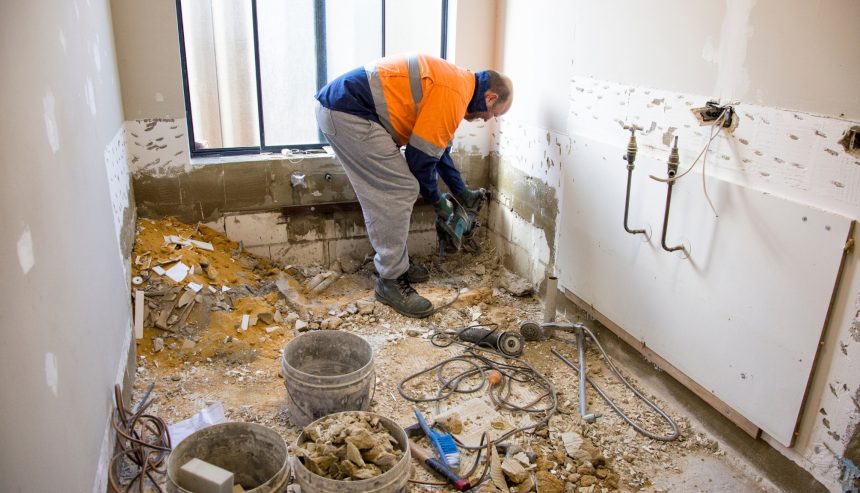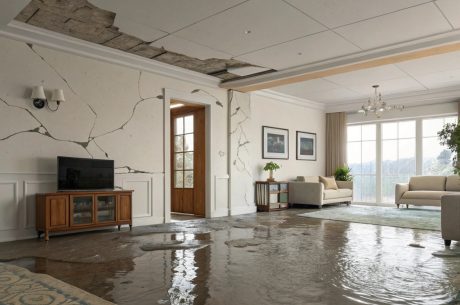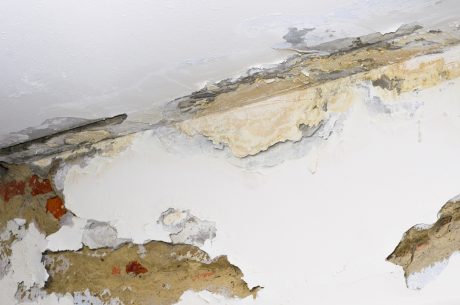When it comes to property damage, water is one of the most destructive forces that homeowners face. And bathrooms, with their constant exposure to water and humidity, are a prime target. If you’ve ever noticed peeling paint, warped flooring, or that musty smell creeping from your bathroom, you’re likely dealing with Water intrusion.
In this blog, we’ll walk through the top causes of bathroom water damage, how to fix them, and tips to prevent future issues. Whether you’re a homeowner, landlord, or property manager, this guide will arm you with the knowledge to act before a small leak turns into a major disaster.
Why Bathrooms Are Especially Vulnerable
Bathrooms are unique spaces in the house. They combine plumbing, moisture, humidity, and limited ventilation, all ingredients for water leakage issues if not properly managed. Daily activities like showering, flushing toilets, and running sinks create constant moisture exposure. Even minor issues, like worn caulk or a dripping faucet, can lead to expensive repairs if left unchecked.
Let’s dive into the most common causes of bathroom water damage and what you can do to fix them.
1. Leaky Faucets and Showerheads
One of the most common bathroom leaks stems from worn-out or faulty fixtures. A dripping faucet might not seem like a big deal, but over time, it can saturate surrounding areas, promote mold growth, and increase your water bill. In fact, the Environmental Protection Agency (EPA) reports that household leaks waste nearly 1 trillion gallons of water each year in the U.S., with bathrooms being a major contributor.
Signs to Watch For:
- Continuous dripping, even when the faucet is turned off
- Water stains or moisture around the base of the fixture
- Corrosion or mineral deposits
2. Damaged Caulking and Grout
Cracked or missing caulking around tubs, showers, and sinks is another major cause of water leakage. Water easily seeps through these gaps and into the walls or floor, especially in areas where caulk has peeled away or grout has eroded.
- Signs to Watch For:
- Visible cracks or gaps in caulking or grout
- Loose or shifting tiles
- Damp or soft spots on nearby walls
3. Toilet Leaks and Overflows
Toilets are a major source of bathroom water damage, especially when the wax seal at the base deteriorates or internal components malfunction.
Signs to Watch For:
- Water pooling around the base of the toilet
- Constant running or refilling
- Sagging or stained floors around the toilet area
4. Clogged Drains and Poor Drainage
Showers, bathtubs, and sinks with slow or clogged drains are more than just an annoyance; they’re a recipe for water damage. When water backs up, it can overflow or leak into the floor and subfloor layers, especially if the seals are weak.
Signs to Watch For:
- Standing water in sinks, tubs, or showers
- Gurgling sounds from drains
- Foul odors coming from pipes
5. Hidden Pipe Leaks Behind Walls
Perhaps the most dangerous type of leak is the one you can’t see. Pipes hidden behind walls, under floors, or above ceilings can leak for weeks or months before noticeable damage appears.
Signs to Watch For:
- Bubbling or peeling paint on bathroom walls
- Musty odors that don’t go away
- Unexplained increases in your water bill
- Stains on the ceiling below the bathroom
6. Poor Ventilation and Excess Humidity
Bathrooms without adequate ventilation trap moisture, leading to condensation on walls, ceilings, and fixtures. Over time, this can damage paint, drywall, and even wood trim.
Signs to Watch For:
- Frequent fogging of mirrors
- Mold or mildew on walls and ceilings
- Paint bubbling or cracking

How to Fix Bathroom Water Damage
If you notice water damage in your bathroom, such as soft walls, mold, or warped flooring. The first step is to locate and stop the source of the water. This could be a leaky faucet, a dripping toilet, or cracked caulking around the tub. Turn off the water supply if needed, fix any broken parts, and seal any gaps with waterproof caulk. Next, make sure everything is completely dry. Use fans, open windows, or a dehumidifier to remove moisture. If walls, floors, or cabinets are too damaged or moldy, it’s best to remove and replace them.
Once the area is dry and clean, you can repair and restore your bathroom. This may include installing new drywall, repainting with mold-resistant paint, or replacing tiles and flooring. Always clean the space with a disinfectant to kill mold and bacteria before rebuilding.
Preventing Future Bathroom Water Damage
Now that you understand the most common causes of bathroom water damage, here are a few preventive steps to keep your space dry and protected:
- Inspect regularly: Check fixtures, under sinks, and around toilets for leaks.
- Maintain caulking and grout: Reapply annually or as needed.
- Install water sensors: These can alert you to hidden leaks before they become serious.
- Use waterproof mats or rugs: These can reduce floor damage from daily splashes.
- Ventilate properly: Run fans during and after showers to remove excess moisture.
Conclusion
Bathroom water leakage is common, but it doesn’t have to be an inevitable one. By understanding the causes of bathroom water damage, from common bathroom leaks to hidden plumbing issues, you can take proactive steps to protect your property. Whether you’re tackling minor repairs or dealing with serious damage, swift action makes all the difference.
If your bathroom has already suffered water damage or you’re unsure about what you’re seeing, don’t wait. Contact a certified water damage restoration specialist in your area to assess the situation and help restore your home to its best condition.
FAQs
Q1. Can I fix bathroom water leakage problems myself, or should I call a pro?
A: Small repairs, like replacing caulk or fixing a faucet, can often be done yourself with basic tools. However, if the damage is widespread, includes mold, or involves hidden leaks behind walls, it’s safer and more effective to hire a water damage restoration professional.
Q2. How long does it take for water damage to show in a bathroom?
A: Water damage can appear within a few hours if there’s a major leak, but slower leaks behind walls or under floors might take days or even weeks to become noticeable. Early signs include damp smells, discoloration, or loose tiles.
Q3. What should I do first if I find water leaks in my bathroom?
A: The first step is to stop the source of the water, whether that means turning off the water supply or fixing a leak. Then, dry out the area as quickly as possible to prevent mold. If the damage looks serious, call a restoration expert to check the causes of bathroom water damage.




 PuroClean of San Clemente
PuroClean of San Clemente